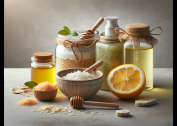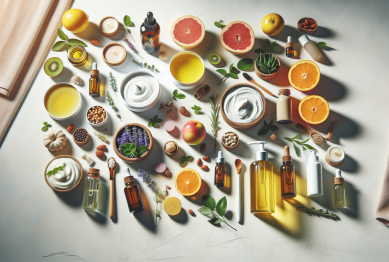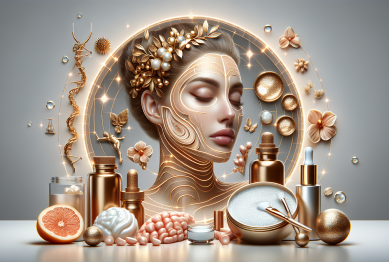Discover how foundational skincare habits can transform the look and feel of your skin. This guide explores proven daily steps, gentle products, and holistic wellness practices that support a radiant complexion. Learn which evidence-based routines are essential for glowing, healthy skin at any age.
Building an Effective Skincare Routine
It surprises many how a simple skincare routine can impact overall skin health. The basic steps—cleansing, moisturizing, and sun protection—are frequently recommended by dermatologists for good reason. Consistent care can help prevent dryness, irritation, and premature aging. These habits don’t require expensive products, just regular commitment and the right techniques. Understanding what your skin needs helps you choose the appropriate cleansers and creams, and also ensures long-term results. Even people with sensitive skin often benefit from gentle, fragrance-free formulas and routines customized for their needs (Source: https://www.aad.org/public/everyday-care/skin-care-basics).
The routine itself is as straightforward as it gets. Start with a gentle cleanser to remove oils, makeup, and dirt without stripping natural moisture. Next, moisturizing locks in hydration. Dermatologists often suggest using lightweight lotions for oily skin or richer creams for dry, flaky areas. Don’t forget about daily sun protection. Broad-spectrum SPF helps prevent unseen sun damage, which accumulates over time and can lead to wrinkles or discoloration (Source: https://www.cdc.gov/cancer/skin/basic_info/prevention.htm). Applying sunscreen even on cloudy days is often a step people overlook.
With so many products and trends, it’s easy to feel overwhelmed. However, getting the basics right offers significant benefits. Overuse of exfoliators or harsh treatments may actually worsen certain skin concerns. Instead, building a daily habit matters most. Regular care, tuned to your skin type and concerns, often leads to steady improvements in texture and tone. Many people report fewer breakouts and improved luminosity just by sticking to simple steps with proven benefits (Source: https://www.ncbi.nlm.nih.gov/pmc/articles/PMC5843351/).
Key Ingredients for Radiant Skin Results
Some active ingredients have widespread support from both researchers and users for promoting skin wellness. Vitamin C, for instance, aids in brightening the complexion and protecting against daily environmental stress. Hyaluronic acid helps attract and retain moisture, resulting in a plumper appearance and fewer fine lines. Retinol, a vitamin A derivative, is known for its ability to improve cell turnover and may ease uneven texture when used consistently—but always with proper sun protection (Source: https://www.ncbi.nlm.nih.gov/pmc/articles/PMC2921764/).
Gentle cleansers with ingredients like glycerin or ceramides help form the backbone of a soothing routine. Ceramides restore the skin’s protective barrier, while niacinamide (vitamin B3) calms inflammation and can make pores appear smaller. Those with more sensitive types or specific concerns such as redness may benefit from formulas that skip heavy scents or alcohol. Many notice dramatic shifts in clarity once adding just one ingredient at a time and monitoring results closely (Source: https://www.ncbi.nlm.nih.gov/pmc/articles/PMC8828315/).
The world of serums and creams continues to expand. Yet, the most effective approach is slow and careful. Applying too many actives at once potentially causes irritation and can even delay progress. Most experts recommend starting with one new ingredient at a time for several weeks to observe how your skin responds. This method minimizes side effects while maximizing the benefits of targeted care—often leading to smoother, brighter, and healthier-looking skin.
The Role of Sun Protection in Everyday Beauty
Sun protection stands out as perhaps the single most important step for long-term skin health. Ultraviolet (UV) rays contribute to skin aging, dark spots, and an increased risk of skin cancer, even on cloudy days or through windows. Wearing broad-spectrum sunscreen every day forms a vital shield against these hidden threats. Health organizations worldwide continue to stress daily sun safety as non-negotiable for anyone seeking to maintain younger-looking, more resilient skin (Source: https://www.cancer.org/healthy/be-safe-in-sun.html).
SPF needs vary by skin type and outdoor exposure. Many experts recommend at least SPF 30 for regular daily use on the face, neck, and hands. For those spending longer hours outside, higher SPFs or additional protective clothing may be beneficial. Reapplication is crucial, especially after swimming, sweating, or extended time outdoors. This habit reduces the cumulative effects of sunlight that often go unnoticed until skin discoloration or new fine lines appear.
Sun protection need not be complicated or expensive. Many moisturizers now include built-in SPF, streamlining daily routines for added convenience. Simply making sunscreen part of morning preparations means protection all day long against both UVA (aging) and UVB (burning) rays. Pairing sunscreen with wide-brimmed hats or lightweight protective clothing further safeguards delicate skin, helping retain a glowing, youthful look season after season.
Nutrition, Hydration, and Lifestyle Habits for Skin
Radiant skin often reflects healthy choices that happen away from the bathroom mirror. Eating a varied diet that features antioxidant-rich fruits and vegetables, lean proteins, and healthy fats plays a significant role in maintaining skin’s natural glow. Omega-3 fatty acids, in particular, support supple skin, while vitamin-rich foods such as berries, avocados, and leafy greens contribute to a smoother texture and improved elasticity. Research supports the link between nutrition and outward appearance (Source: https://www.hsph.harvard.edu/nutritionsource/skin-health/).
Hydration is a cornerstone of any effective routine. Drinking enough water daily helps keep skin cells hydrated and can reduce the dull look that sometimes follows sleepless nights or excess caffeine. Herbal teas or water-dense snacks like cucumber and melon also help. Lifestyle habits such as managing stress, sleeping soundly, and avoiding tobacco or alcohol excesses all factor into the radiance and texture of skin over time.
Ultimately, the pathway to lasting skin wellness is holistic. Balancing self-care routines, nutrition, hydration, and rest provides comprehensive benefits that topical products alone cannot match. As habits accumulate, skin often responds with fewer blemishes, better balance, and that much-sought after luminous appearance that stands the test of time.
Mistakes to Avoid and Tips for Lasting Results
Many people unknowingly sabotage their progress by using harsh scrubs or too many active products. Overdoing it with exfoliants or acids may weaken the skin’s protective barrier, causing redness, irritation, or flare-ups. Simplicity often wins: gentle cleansing, consistent moisture, and solid sun protection provide a steady foundation. Only introduce new products gradually, especially if you notice sensitivity or breakouts (Source: https://www.fda.gov/consumers/consumer-updates/do-it-yourself-skin-care-products-danger-doesnt-always-lurk-bottle).
Listening to your skin’s signals is an undervalued skill. If redness, discomfort, or flakiness appear, these could be warning signs to pull back. Many experts recommend patch testing new products on a small area before full-face application. This approach is especially important for those prone to allergic reactions or using acids and retinoids. Focusing on individual results, rather than trends or online hype, leads to safer outcomes and personalized improvements.
Patience and routine matter most. While many products promise fast miracles, real transformation comes from consistent habits week after week. Keep expectations realistic. If results don’t show immediately, steady routines still provide underlying benefits that will surface over time. Learn from trusted sources, experiment cautiously, and always prioritize your skin’s comfort. This is the surest pathway to lasting skin health and beauty.
References
1. American Academy of Dermatology. (2023). Skin care basics. Retrieved from https://www.aad.org/public/everyday-care/skin-care-basics
2. Centers for Disease Control and Prevention. (2022). Skin cancer prevention. Retrieved from https://www.cdc.gov/cancer/skin/basic_info/prevention.htm
3. Draelos, Z.D. (2018). The science behind skin care: Moisturizers. Retrieved from https://www.ncbi.nlm.nih.gov/pmc/articles/PMC5843351/
4. Mukherjee, S. et al. (2006). Retinoids in the treatment of skin aging. Retrieved from https://www.ncbi.nlm.nih.gov/pmc/articles/PMC2921764/
5. Gupta, M.A., & Maheshwari, D.P. (2022). Cosmeceuticals for the skin: An overview. Retrieved from https://www.ncbi.nlm.nih.gov/pmc/articles/PMC8828315/
6. Harvard T.H. Chan School of Public Health. (2023). Skin health: Nutrition & diet. Retrieved from https://www.hsph.harvard.edu/nutritionsource/skin-health/









